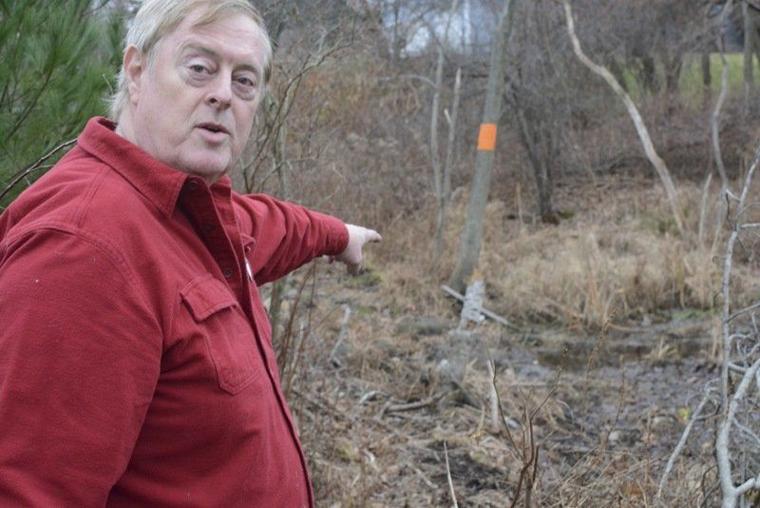Fish and Game upheaval reveals shift in California wildlife policy
 The sudden resignation of the most adamant defender of hunting and fishing on the California Fish and Game Commission could put the finishing touches on a sweeping philosophical shift in the way the state views wildlife, sets rules for fishing and controls predators like mountain lions and wolves.
The sudden resignation of the most adamant defender of hunting and fishing on the California Fish and Game Commission could put the finishing touches on a sweeping philosophical shift in the way the state views wildlife, sets rules for fishing and controls predators like mountain lions and wolves.
Commissioner Jim Kellogg retired in late December in frustration over what he termed a lack of consideration for the sportsmen and women he represents. The resignation — combined with the unrelated recent departures of commission President Jack Baylis and Sonke Mastrup, the commission’s executive director — sets the stage for Gov. Jerry Brown to appoint conservationists to the increasingly pivotal state board.
Such a move may, observers say, complete the transformation of the commission from an organization that advocates for fishing and hunting to one that safeguards endangered species, preserves habitat and protects California’s top predators from slaughter.
The five-member commission, whose job is to recommend policies to the California Department of Fish and Wildlife, has been wading through divisive issues that could profoundly impact the future of the state, including what to do about diminishing salmon populations, sick sea lions and disappearing sea otters.
“I’m leaving pretty much out of frustration,” Kellogg said in an interview. He had been on the board for 14 years when he retired Dec. 31, the longest-serving member of the commission.
“I’m just tired of being the only one fighting the fight for the hunters and fishers,” he said. “The first 12 years I won most of the battles, and the last couple of years I lost almost every battle.”
Poor Mr. Kellogg. As he said, he used to win most arguments just by showing up. And now with all these darned conservationists at the table he actually has to TRY and use facts and stuff. No wonder he’s quitting.
Why aren’t “Sportsmen” better sports?
 And before you say that I’m being unfair to a breakfast cereal, remember that we in Martinez have a very fond remembrance f0r the man. Way back in the day the beavers were first slated for killing, the mayor negotiated a special deal with Mr. Kellogg that would allow two of the six beavers to be relocated, and after a short quarantine period, re-homed on tribal hand in Plumas county. Of course the other 4 would have to be killed, but hey, the man threw us a bone!
And before you say that I’m being unfair to a breakfast cereal, remember that we in Martinez have a very fond remembrance f0r the man. Way back in the day the beavers were first slated for killing, the mayor negotiated a special deal with Mr. Kellogg that would allow two of the six beavers to be relocated, and after a short quarantine period, re-homed on tribal hand in Plumas county. Of course the other 4 would have to be killed, but hey, the man threw us a bone!
(Well, you may remember that on November 7, 2007 Martinez emphatically decided not to be boned. They said pretty definitively they didn’t want to kill their beavers, or save a few. They wanted to keep them ALL. And the rest, as they say, is history.)
Now back to our story, apparently the renamed CDFG is going through an identity crisis. They even hired a black man [horrors!] for the first time in 145 years! Imagine the confusion changing their name caused in 2012. All I can say is that it couldn’t happen to a nicer bully.
But it was the resignation of Kellogg, who often teamed up with Sutton and Richards, that was viewed by many as the end of the line for the hunting and fishing coalition on the commission.
The changes on the commission are an illustration of a statewide phenomenon. Californians, more than ever, regard wildlife, including apex predators, as a valuable part of the ecosystem instead of as food or vermin.

Chuck Bonham, the director of the Department of Fish and Wildlife, says he is committed to embracing science-based wildlife and ecosystem management while preserving the history and traditions associated with hunting and fishing.
Clearly, though, there has been a movement away from those traditions. The transformation became vivid in 2012 when then-Assemblyman Jared Huffman of San Rafael, who has since been elected to Congress, introduced a bill to change the name of the department that has managed fishing and hunting in California since 1872 from “Fish and Game” to “Fish and Wildlife.”
The bill passed in 2013 despite opposition from hunters, who saw it as a signal that game animals would soon be made off-limits. The commission itself, however, maintained the “Fish and Game” moniker despite lobbying by environmental groups to change the names of both the commission and the department it serves.
Hmm, I wonder who will replace Kellogg on that commission? I have some suggestions if you need any. In the meantime we should be cautiously optimistic that this, and the pressure to save salmon, will nudge something in the beaver’s favor. It’s a new world, baby. Where bobcat hunting is outlawed and people have to actually crack open those old ecology texts to figure out what words like “Apex predators” and “Keystone species” actually mean.
Given the week we all had, this song is perfect for the occasion.

















































